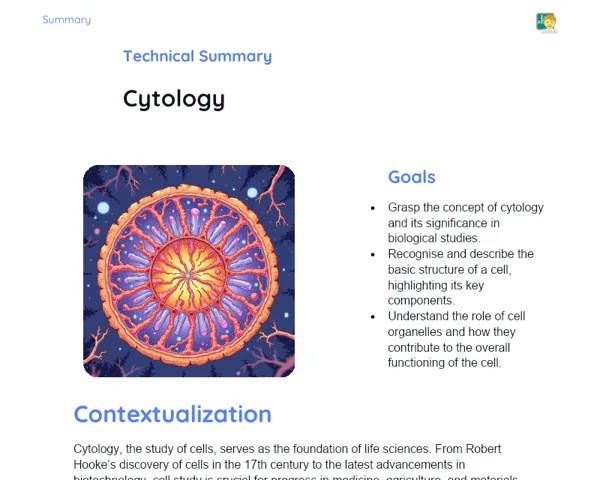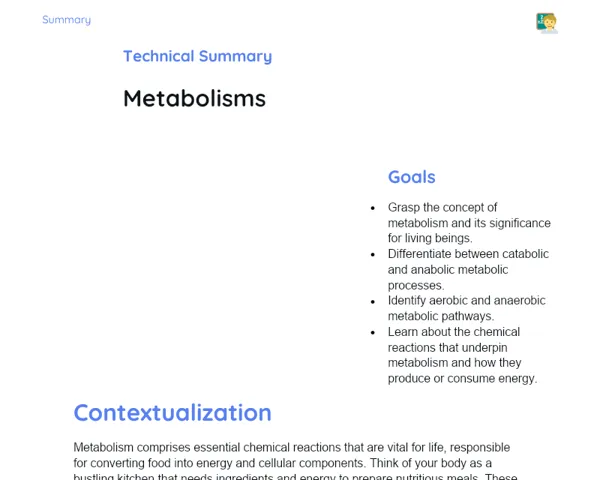Objectives
1. 🎯 Understand the concept of genetic linkage and its significance in the inheritance of traits.
2. 🔍 Develop problem-solving skills in genetics by applying the linkage concept in practical scenarios.
3. 👩🔬 Differentiate between the types of linkage and their influence on genetic recombination.
Contextualization
Did you know that the study of genetic linkage was key in understanding how our inherited traits work? In the early 20th century, scientists like Thomas Hunt Morgan used linkage to identify the locations of genes on chromosomes, which changed the course of genetics forever. This understanding not only enhanced scientific knowledge but also finds applications in improving agricultural crops. By exploring linkage, you're delving into one of the cornerstones of modern genetics, which plays a vital role in many fields of biology and biotechnology.
Important Topics
Genetic Linkage
Genetic linkage refers to the likelihood of certain genes situated close to each other on chromosomes being inherited together without recombination during meiosis. This concept was first recognized by Thomas Hunt Morgan, who found that certain genes behaved differently than expected based on Mendel's laws due to their closeness on the chromosome. The extent of linkage between genes correlates with their physical distance on the chromosome, which is vital for gene mapping and understanding inheritance patterns.
-
Genes that are in close proximity on the same chromosome have a reduced chance of being separated when gametes are formed.
-
Studying linkage helps predict the occurrence of specific genetic traits together, which is crucial for genetic research and improving species.
-
The extent of linkage can assist in determining the 'order' of genes on a chromosome, an important factor for constructing genetic maps.
Genetic Recombination
Genetic recombination is the mechanism by which genes located on homologous chromosomes can exchange DNA segments during meiosis. The recombination frequency between two genes is inversely related to the physical distance separating them on the chromosome. Genes further apart are more likely to recombine during segregation, which underpins many genetic mapping techniques.
-
Genetic recombination is a key process that fosters genetic diversity, facilitating the emergence of new genetic combinations.
-
The recombination frequency can gauge the distance between genes, which is foundational for genetic mapping and understanding genetic disorders.
-
Grasping genetic recombination is crucial for linkage and association studies in both human and animal genetics.
Genetic Maps
Genetic maps are visual representations showing the locations of genes on chromosomes, derived from linkage studies and genetic recombination analyses. They are essential for comprehending chromosome organization and predicting the inheritance of traits. Genetic maps can help pinpoint genes linked to diseases and assist in developing strategies for genetic improvement in crops and livestock.
-
Genetic maps aid in localizing genes of interest, supporting studies on diseases or traits of interest.
-
Creating genetic maps requires gathering linkage and recombination data from multiple generations, necessitating rigorous methodology and statistical evaluation.
-
Contemporary technologies such as next-generation sequencing have enhanced the precision and detail of genetic maps.
Key Terms
-
Genetic Linkage: The tendency of closely located genes on a chromosome to be inherited together with minimal recombination.
-
Genetic Recombination: The process where homologous chromosomes exchange segments of DNA during meiosis, contributing to genetic variability.
-
Genetic Map: A representation illustrating the locations and distances between genes on a chromosome founded on linkage and recombination studies.
For Reflection
-
How can knowledge of genetic linkage influence enhancement practices in plants and animals?
-
In what ways can exploring genetic recombination aid research in genetic therapies?
-
Why is it essential for scientists to keep updating genetic maps in light of new findings and technologies?
Important Conclusions
-
We delved into the intriguing realm of genetic linkage and its role in the inheritance of traits, finding that genes located nearby are more likely to be inherited together.
-
We discussed genetic recombination, a crucial process introducing genetic diversity and how its frequency is inversely proportional to gene distance, vital for mapping and understanding population genetics.
-
We highlighted the significance of genetic maps in identifying disease-associated genes and promoting genetic advancements in crops and livestock.
To Exercise Knowledge
- Create a genetic map of your own family and identify physical traits that may be linked. 2. Draw two hypothetical chromosomes and simulate DNA segment exchanges during recombination. 3. Research and present a case study where understanding genetic linkage significantly improved genetics or medicine.
Challenge
Genetic Detective Challenge: Using information about various genetic traits from your family or friends, predict which genes are linked and justify your predictions based on genetic linkage. Present your findings in an engaging report!
Study Tips
-
Regularly review concepts of genetic linkage and recombination through diagrams and concept maps to visualize gene relationships.
-
Join online discussion forums or study groups to explore practical examples of genetic linkage and its applications in various biological fields.
-
Create comparative notes on different kinds of linkage and their impact on genetic recombination, showcasing real examples and possible applications.



